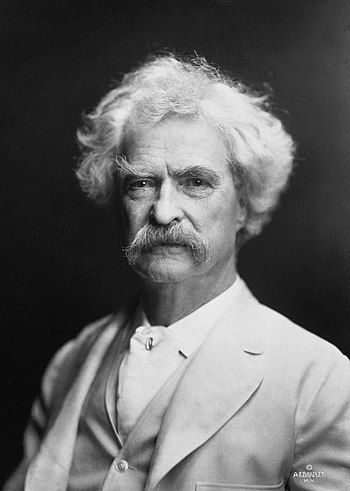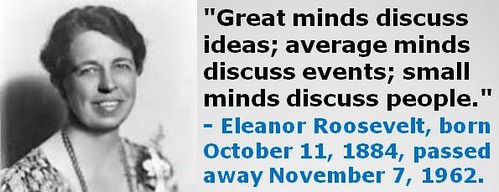We all look for the key recipe for the success. The secret element which will make all the difference.
The only true answer doesn’t exist. There’re plenty of skills which once mastered would change your life completely (This article originally appeared on Growthzer).

However, a skill that I believe is incredibly important in today's world, and it's something the vast majority of people lacks, is self-control.
Deeply inside, nobody wants to be unhealthy and practice self-destructing habits. But if you look around, people kill themselves every single day. The death may not come immediately, but it's going to arrive way sooner than it supposed to. Diabetes and cancer are sold on every corner. Profit is what counts to most of the companies, your health doesn't. So it's you who's responsible for controlling yourself.
People waste their most precious resource, which is time, on a daily basis and they'll never get it back.
This is caused by the lack of self-control. As a result, the urges, and today's economy is based on your urges, become more powerful than you're, so you act accordingly, instead of acting the way a disciplined person would.
Now, I'm not trying to say that being extremely disciplined would be a good thing. It definitely wouldn't. The overabundance of self-control is probably as harmful as the dearth of it.
But imagine a life in which you learned how to control yourself so that the obstacles the world throws at you become irrelevant: you just proceed with your goals.
Instead of putting junk into your body, you eat healthy foods, allowing yourself a reward in a form of eating what you want from time to time. This will have a tremendous impact on your health. You no longer have to try out fancy diets. If you eat real food instead of food-like products and you control the amounts, then you won't become overweight no matter how much you want it.
You also begin leading an active lifestyle. Instead of giving up on your New Year's fitness resolutions after two weeks, you hit the gym 3 times a week and walk a few miles on a daily basis.
After a year of controlling just these two areas: which is your plate and your lazy ass, you would already hugely transform your life, not just your body.
Now, let's take it further. We're bombarded with entertainment: Television, video games (which you can now play everywhere and every time because of smartphones), the Internet and so on. All these things can become really harmful once you lack self-control, and as you know, most people do not possess this invaluable skill. So instead of playing video games, watching Television or mindlessly browsing the Internet, which all translates to wasting your time, you read.
You commit to reading two hours a day, which may sound like a lot, but ask yourself how many hours you waste daily on the above three time-suckers. Books are life-changing. We learn through experience, but you can only experience so much in a lifetime. Owing to books, you can learn from other people's lives and apply the lessons during your personal journey. You will not find a highly successful person on this planet who would advise against books. Most of them would highly recommend you to consume them like you'd fast food or sweets.

So now a year goes by and you've been reading two hours a day for twelve months. I won't try to estimate the number of books you'd read, but there's one thing you can be sure of. It would be more than what the vast majority of people will ever read in their lifetime. They won't even read the half of it.
But reading great books without applying what you learn won't lead you to completely changing your life. You need to take action. For every single problem you'll experience in your life there's at least one decent book that offers the solution. To most of your issues, there're dozens of great reads. So now, as you start utilizing your knowledge, because due to self-control you proceed instead of procrastinating, imagine how many obstacles you'd overcome.
I'd like to take it further, so let's continue. As you read for two hours on a daily basis, you eventually become inspired to put your own thoughts on the paper. You realize that you'd love to write a book. The fact is, more than 80% of people wish to, but only 1% of them will ever write a book. And you know why 99% will fail? Because they lack the self-control to do the right thing instead of letting their urges dictate the flow of the day.
Fortunately, that's no longer your problem, so you commit to writing 500 words a day and stick to that for another twelve months. At the end of the year, you end up with more than 180 000 words of content. It may not necessarily be the piece of art comparing to the great writers, but it's definitely a miracle in comparison to what you used to be before you learned the skill of self-control.
Let's assume the positive, because why wouldn't we? Your book turns out to be pretty decent, which you've heard from a few people that you shared your work with. So you hire an editor and graphic designer to prepare it for publishing. Because of the self-publishing movement growing in power, you no longer need to cooperate with the publishing house. You can publish it on Amazon and let the readers judge your words.
More and more positive reviews appear under your name, money starts coming in. Over time, you become a recognized author and you like it so much that you continue polishing your craft. Maybe you'd even quit your job? Every year, you add a new book to your writer's portfolio.
Taking this story further in your imagination will either overwhelm you or inspire you to begin working on your self-control today. There're tons of invaluable skills to learn which has the potential to transform your life, but self-control is the key required to keep working on whatever skill you'd like to develop.
Some people would say that this sounds nice when you read it, but doing is a whole different story. It absolutely is. But why would you expect a miracle, a complete life-transformation caused by ordinary actions.
The society is mostly made of the third type. They just wonder why the heck they're in debt, overweight and miserable. Then there's the second type of people, who start to observe their surroundings more carefully as they become sick of being in the third category. They watch the high-achievers, the men of action. Some of them will eventually take a full responsibility for their lives and join the first type, also know as the happiest and fulfilled people, those who make things happen.
They know that the above scenario is absolutely possible, and the only barrier which separates you from achieving it, is you who need to finally find enough self-control to make it happen.
If you believe that my message is worth spreading, please use the share buttons.
Stephen Hodgkiss
Chief Engineer at MarketHive
markethive.com
Alan Zibluk – Markethive Founding Member





















